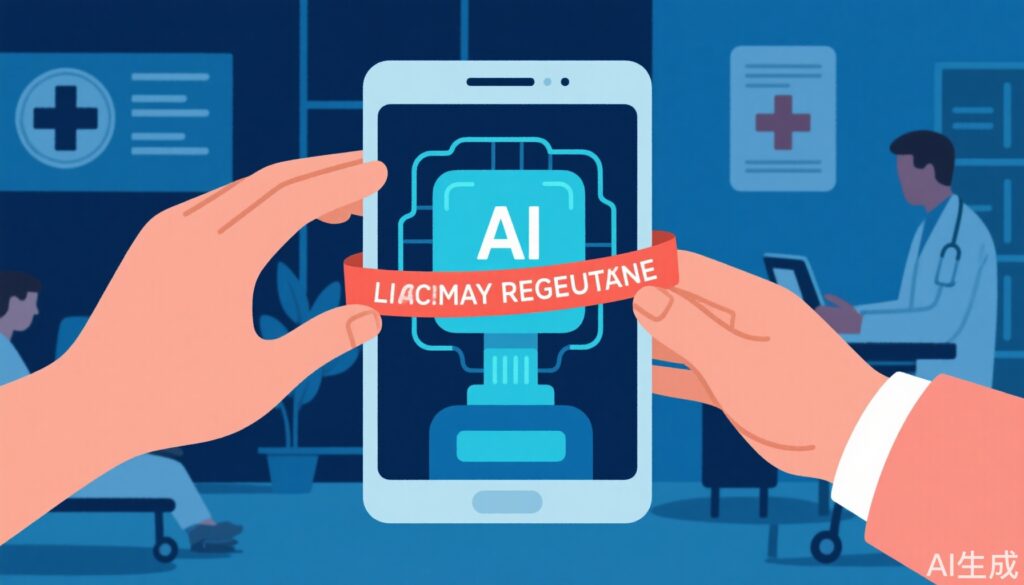Introduction to California Assembly Bill 489
California’s Assembly Bill 489 (“AB 489”) signals more than just a tweak to existing healthcare law—it provides a glimpse into how the next generation of regulation may shape the future of AI development and deployment in healthcare. As large language models (LLMs) and other AI-driven health platforms accelerate in capability and adoption, lawmakers are scrutinizing areas where technological innovation might result in the unauthorized practice of medicine. This creates a clear message: the days of operating in a regulatory gray zone are numbered. The regulatory perimeter surrounding healthcare AI is tightening, paving the way for legislation dictating how AI can present itself to the public, not just how it operates in the background.
AI “Impersonation” in Focus
AB 489 targets AI systems that give patients the false impression of interacting with a licensed healthcare professional when no actual regulatory oversight exists. This extends to both overt misrepresentations such as a chatbot claiming “I’m Dr. Smith,” and more subtle cues such as post-nominal letters that imply training, use of professional terminology, or even the conversational tone that suggests licensed expertise. Legislators appear to consider that these subtle cues could mislead users into believing licensed expertise is actively involved.
It is vital to highlight that California law already prohibits unlicensed individuals from using terms that imply medical licensure. AB 489 reinforces these existing rules for the AI-driven era, explicitly encompassing AI-generated content and automated interactions.
Key Provisions with Industry-Shaping Implications
AB 489 forbids the use of any post-nominal letters, phrases, or features in AI systems that would suggest that a user is receiving care from a licensed healthcare professional—unless such oversight genuinely exists. This introduces three immediate compliance challenges for AI developers and deployers:
1. New Enforcement Channels
Critically, state professional licensing boards will acquire direct oversight over these potential violations, adding another compliance checkpoint alongside existing privacy, security, and consumer protection rules. Notably, each violation could be considered a separate offense, increasing the stakes for developers and deployers.
2. Interface Overhauls
User Interface (UI) and User Experience (UX) teams will need to cleanse products of any design elements—terminology, icons, and phrasing—that imply licensed care without sufficient corroboration supporting appropriate licensure and oversight.
3. Marketing Reinvention
Positioning AI products as “doctor-level,” “clinician-guided,” or “expert-backed” may become riskier unless AI development actually involves the engagement of licensed practitioners.
Part of a Bigger Regulatory Wave
Even though California is pioneering with AB 489, this legislation does not arrive in isolation. It forms part of a larger initiative to regulate AI in healthcare, alongside advancements in transparency, algorithmic bias, and patient safety. The bill also aligns with the state’s stringent rules concerning corporate practice of medicine (“CPOM”), which affirm that clinical decisions must remain the domain of licensed healthcare professionals.
Strategic Playbook for Healthcare AI Innovators
If AB 489 becomes law, AI developers could embrace and leverage this regulation as a catalyst for building trust and achieving market advantage. For instance, AI developers might consider designing proactive compliance strategies that integrate legal reviews in the early stages of product development and marketing, helping to avoid costly reworks post-launch. Moreover, engaging licensed practitioners during the development and design phases can facilitate compliance with legal marketing representations regarding professional oversight. Furthermore, developers should keep pace with regulatory movements towards transparency and ensure clear disclosures about what AI can and cannot do, alongside the establishment of explainable decision pathways.
For healthcare AI companies, the challenge is twofold: to stay ahead of compliance requirements while maintaining the momentum of innovation. The entities that succeed will be those who embed regulatory readiness into their core strategies. AB 489 serves to further illustrate a burgeoning policy push at the state level to ensure that AI development and adoption is steered not solely by the fastest innovators but rather by those that are most trusted.


